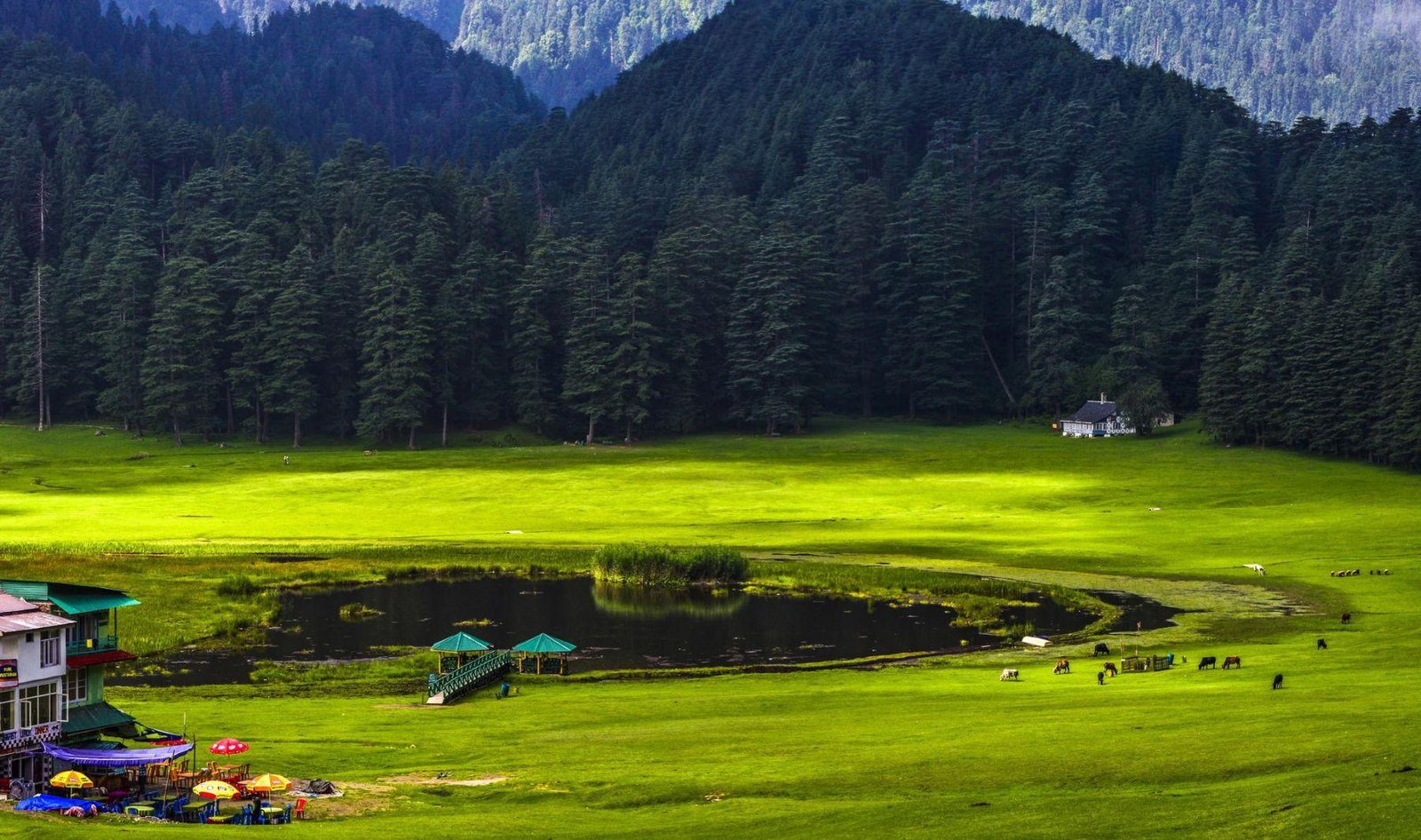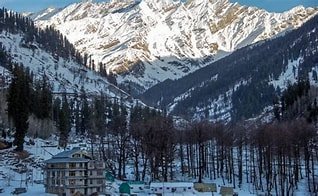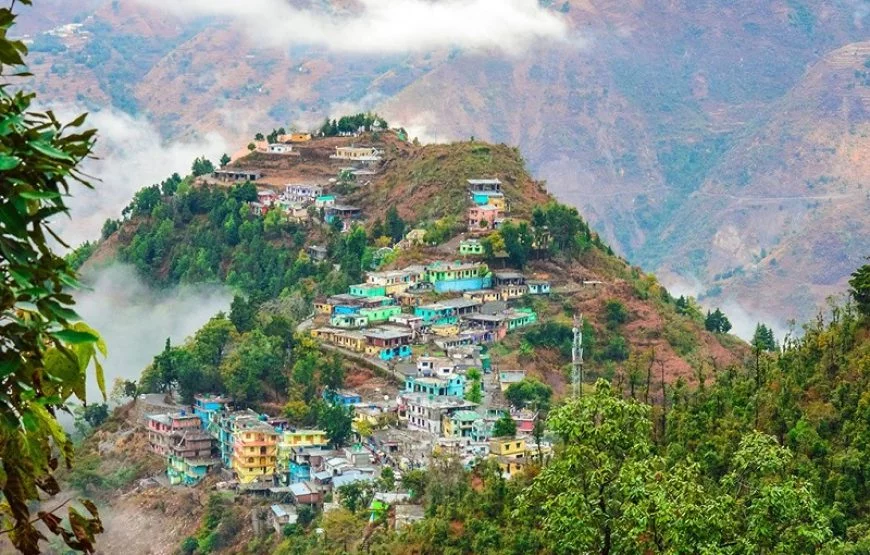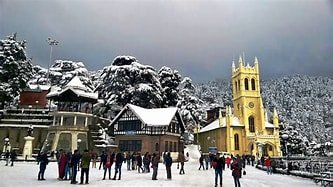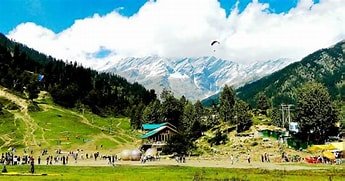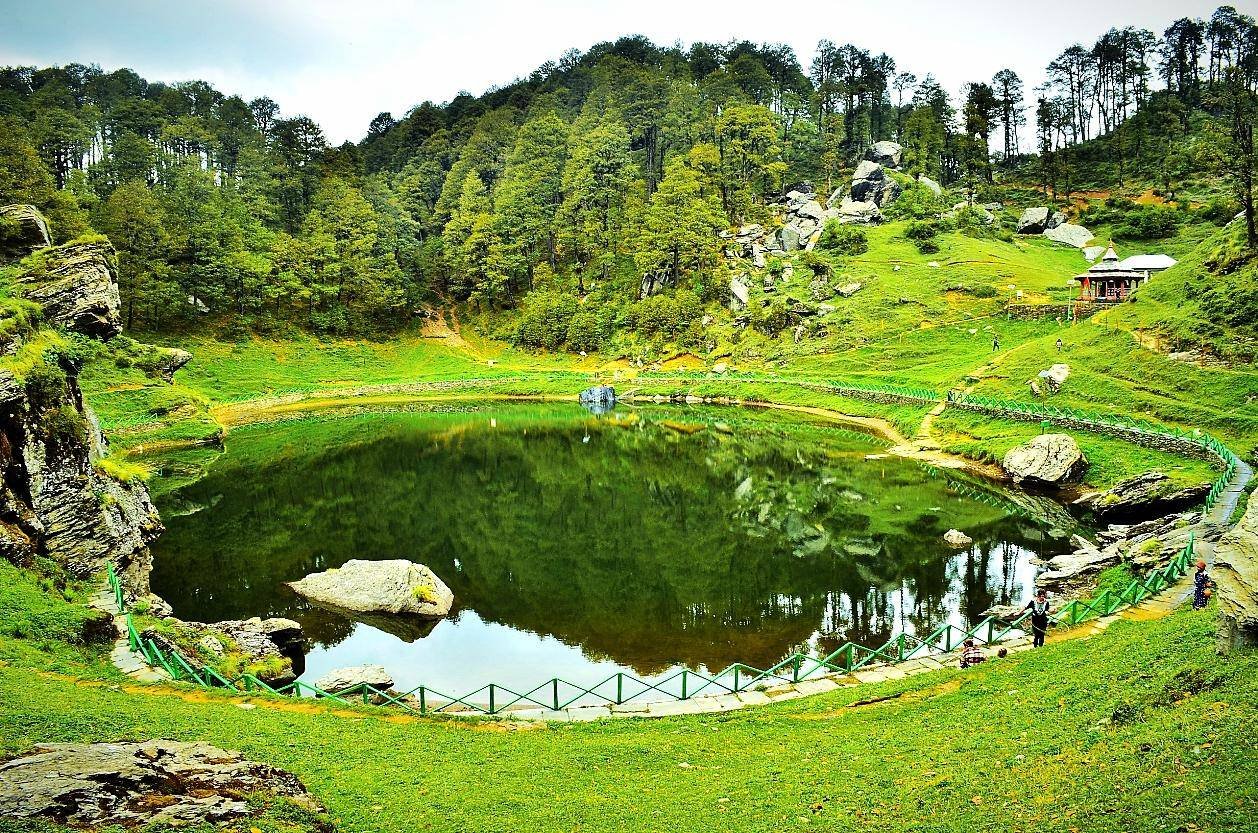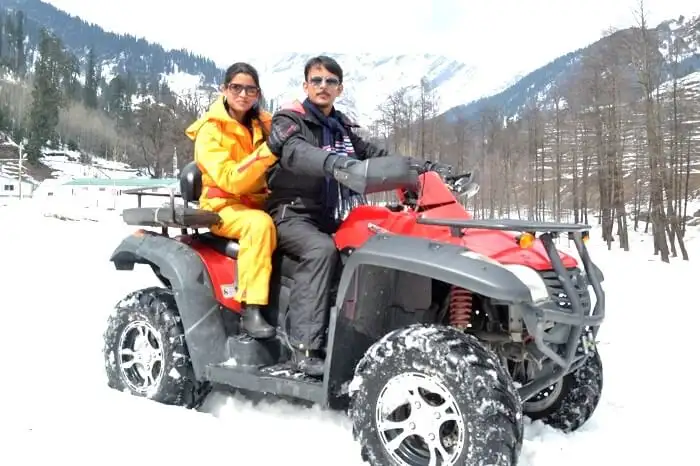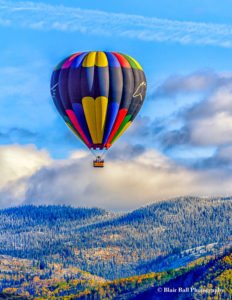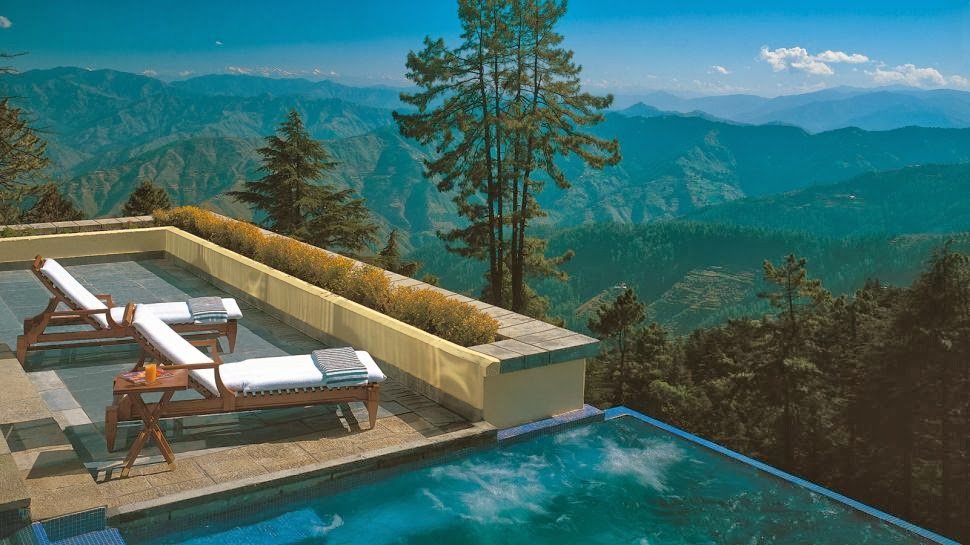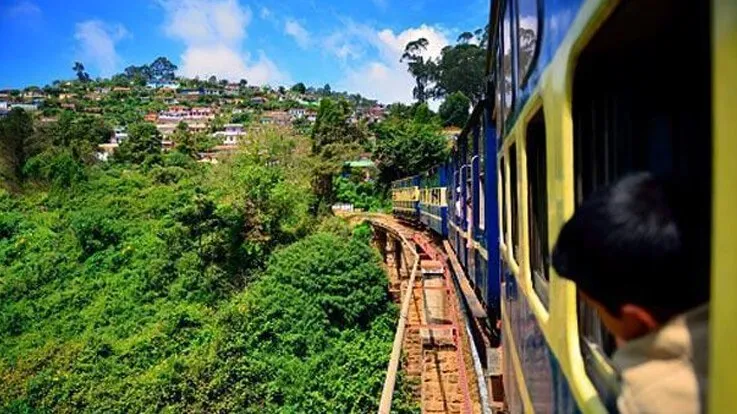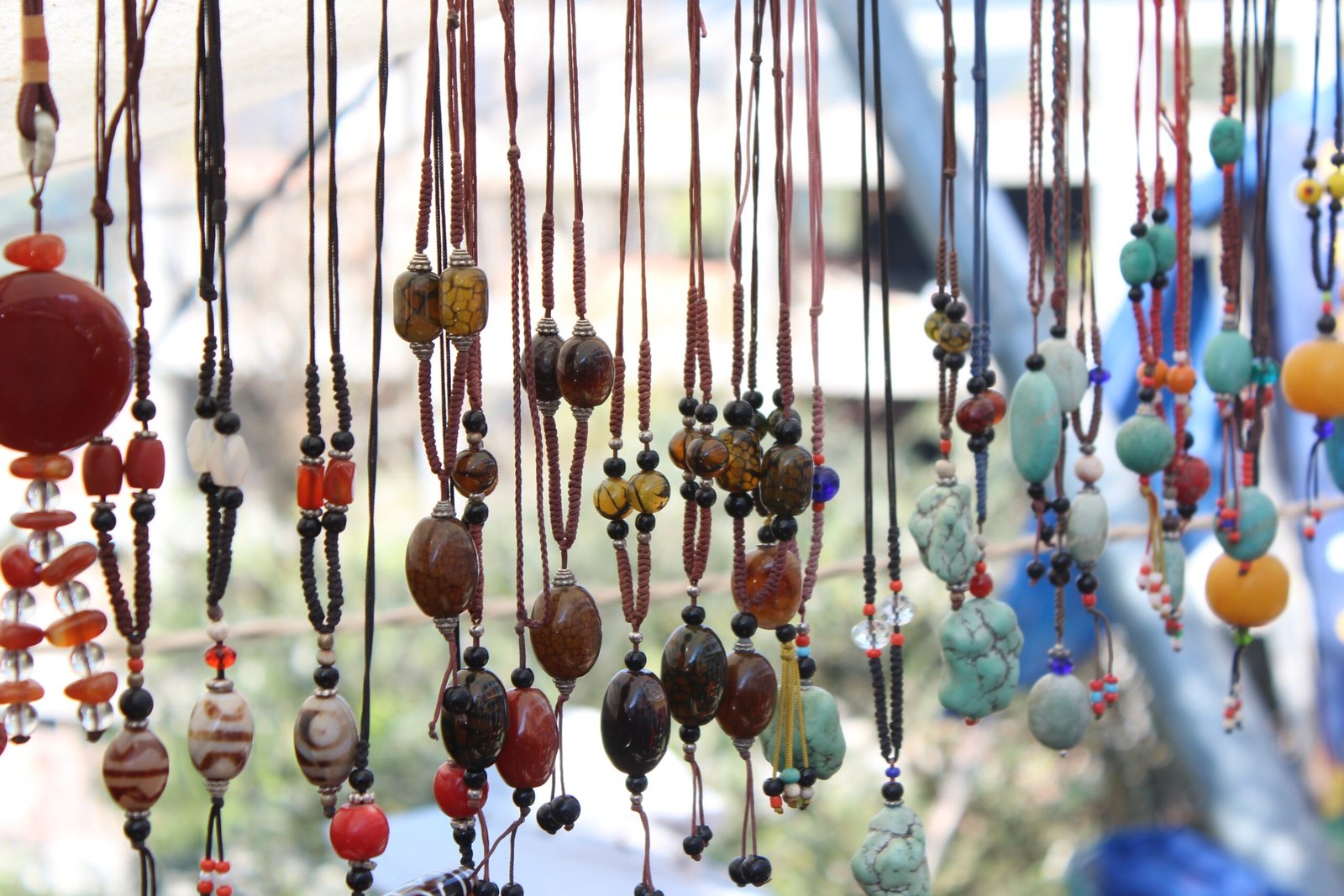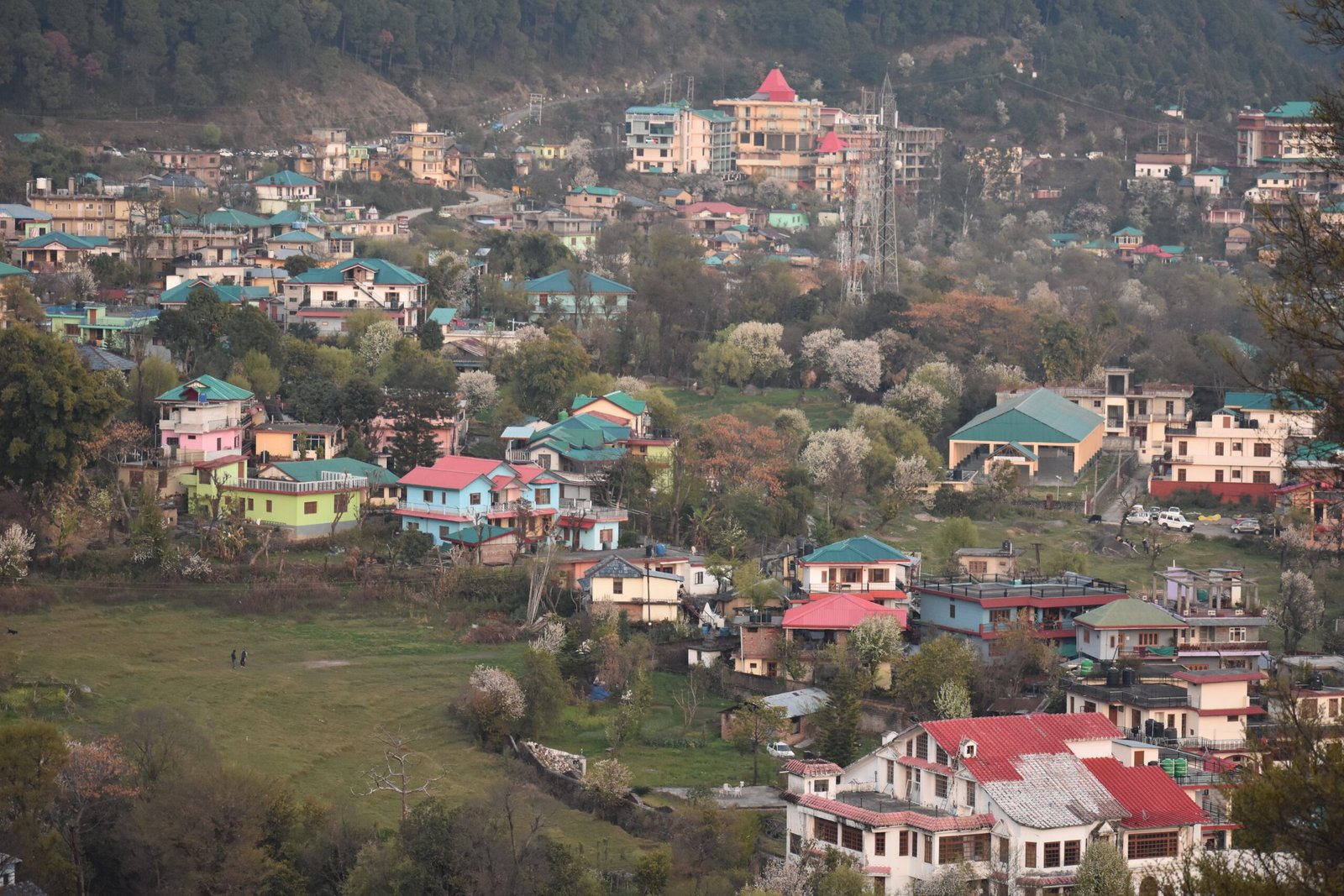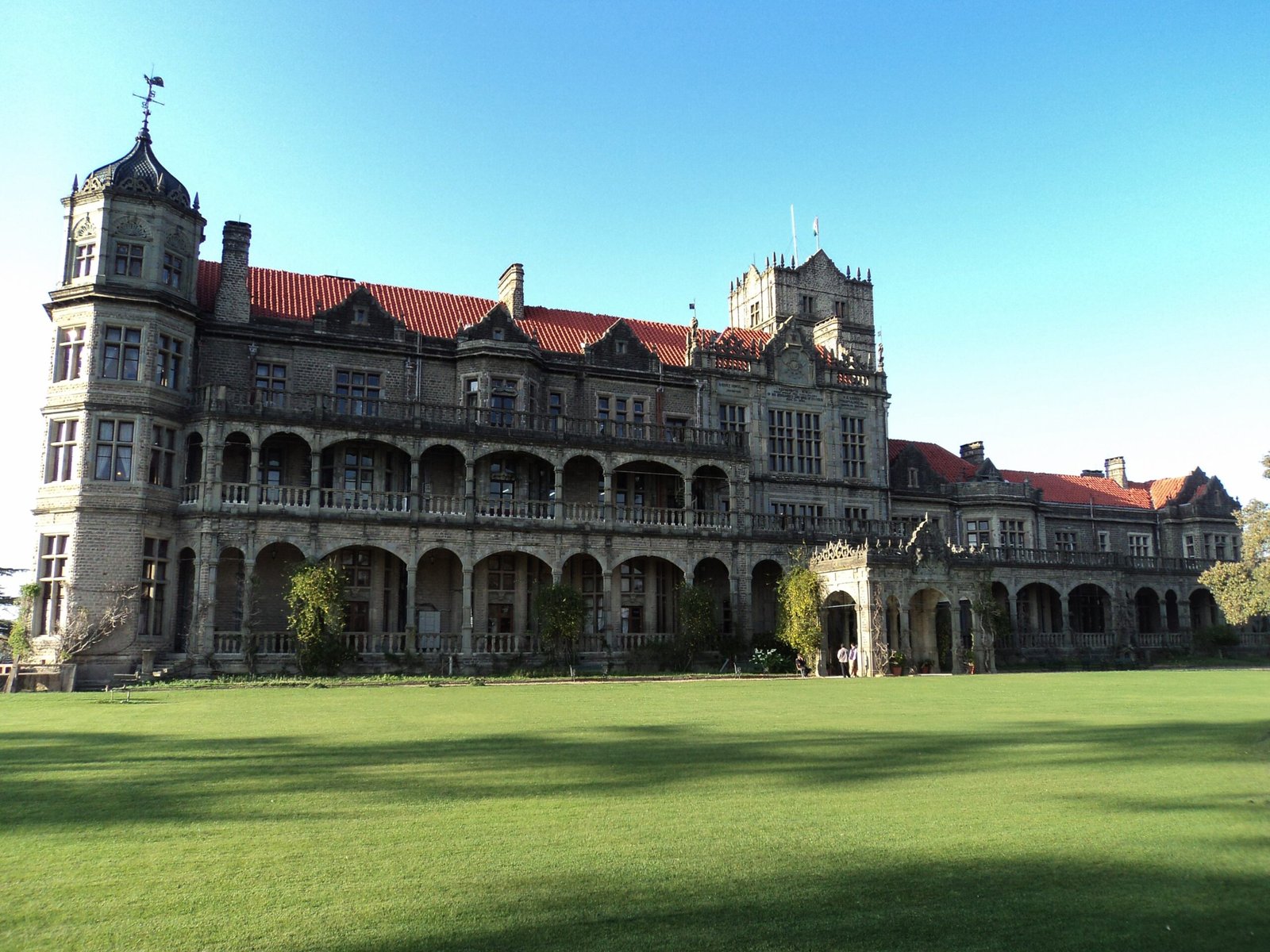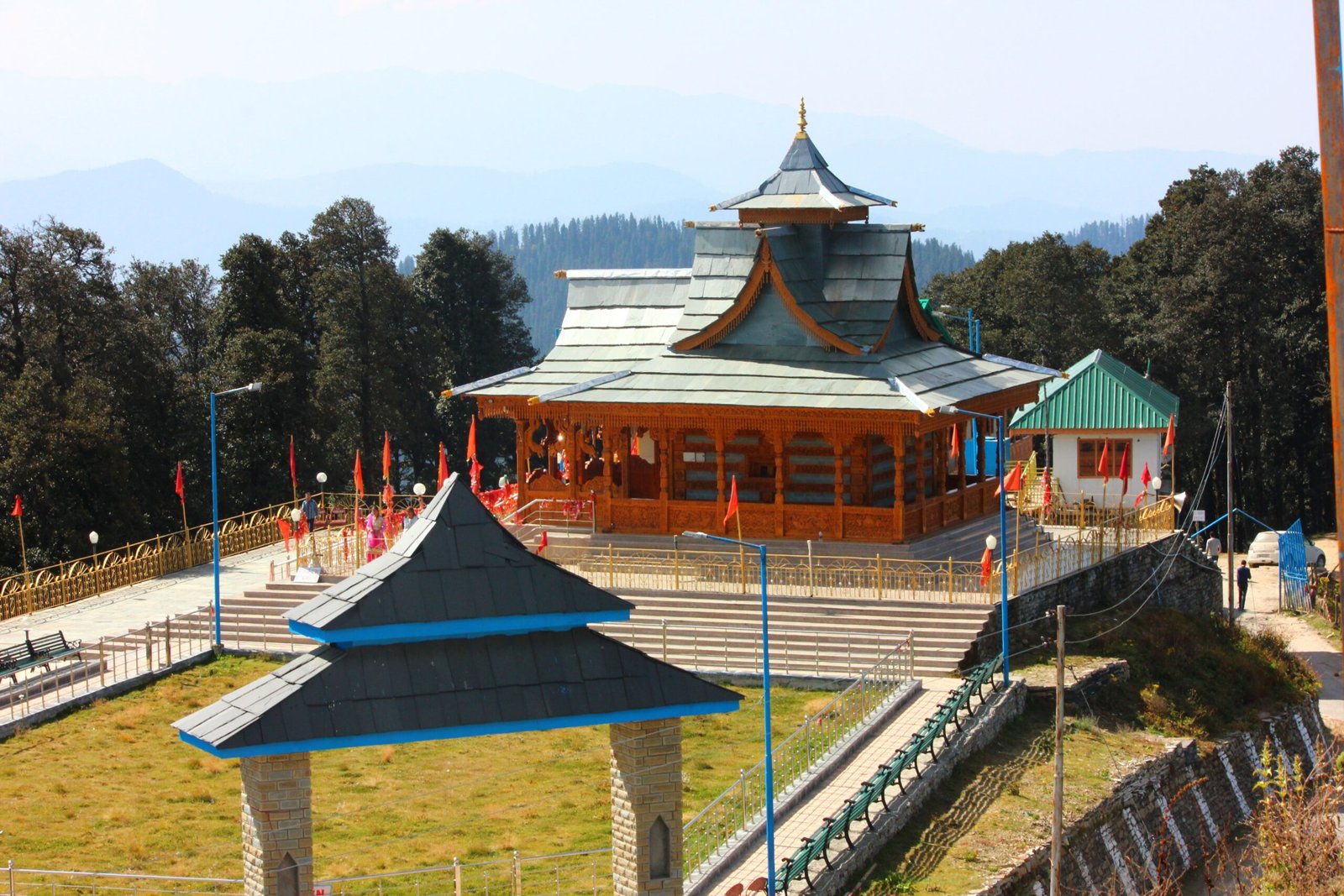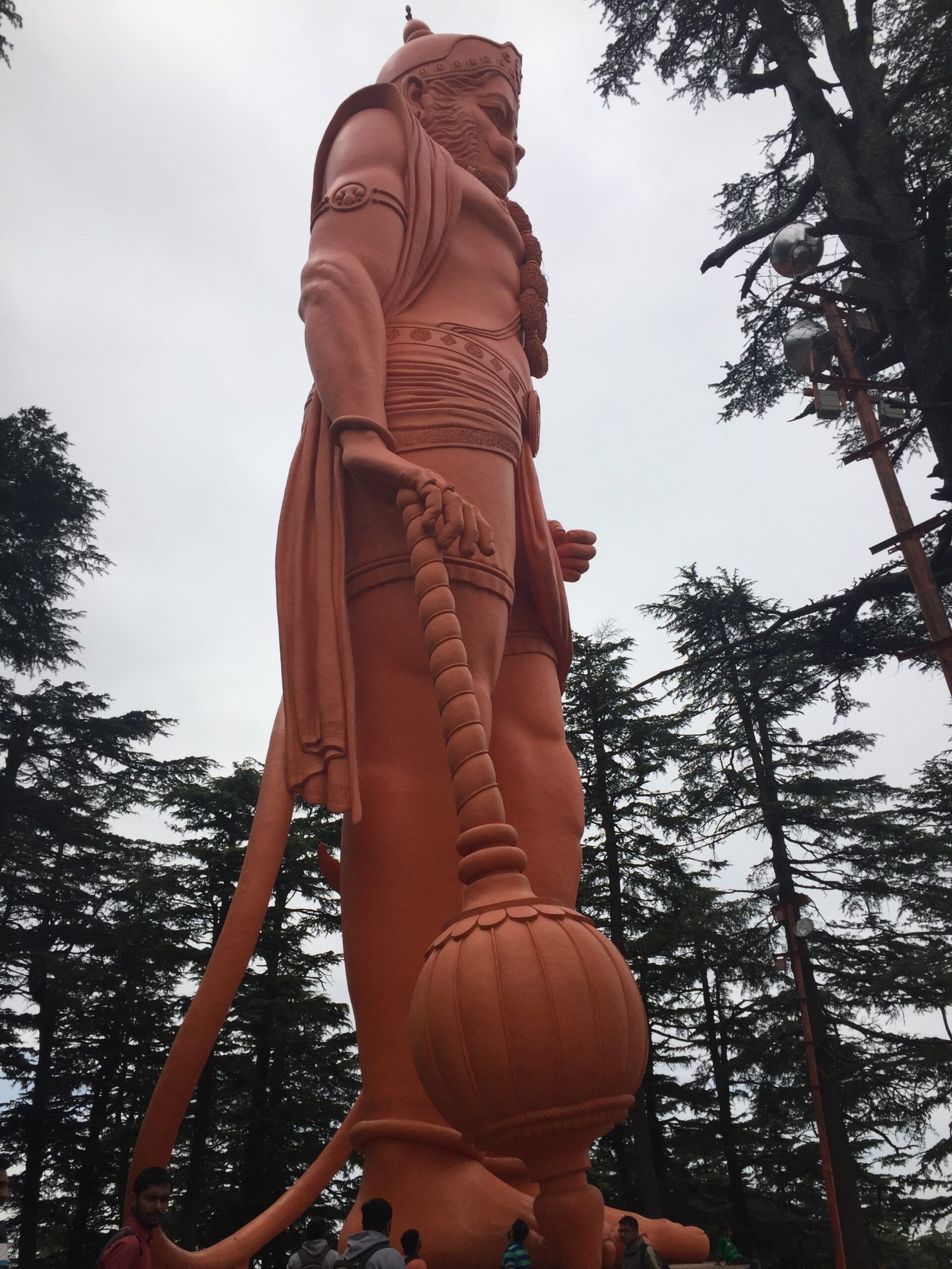Himachal Pradesh
Himachal Pradesh (/hɪˌmɑːtʃəl prəˈdɛʃ/; Hindi: [ɦɪˈmäːtʃəl pɾəˈd̪eːʃ] ⓘ; lit. “Snow-laden Mountain Province”[9]) is a state in the northern part of India. Situated in the Western Himalayas, it is one of the thirteen mountain states and is characterised by an extreme landscape featuring several peaks and extensive river systems. Himachal Pradesh is the northernmost state of India and shares borders with the union territories of Jammu and Kashmir and Ladakh to the north, and the states of Punjab to the west, Haryana to the southwest, Uttarakhand to the southeast and a very narrow border with Uttar Pradesh to the south. The state also shares an international border to the east with the Tibet Autonomous Region in China. Himachal Pradesh is also known as Dev Bhoomi or Dev Bhumi, meaning ‘Land of Gods’[10] and Veer Bhoomi which means ‘Land of the Brave’.[11]
The predominantly mountainous region comprising the present-day Himachal Pradesh has been inhabited since pre-historic times, having witnessed multiple waves of human migrations from other areas.[12] Through its history, the region was mostly ruled by local kingdoms, some of which accepted the suzerainty of larger empires. Prior to India’s independence from the British, Himachal comprised the hilly regions of the Punjab Province of British India. After independence, many of the hilly territories were organised as the Chief Commissioner’s province of Himachal Pradesh, which later became a Union Territory. In 1966, hilly areas of the neighbouring Punjab state were merged into Himachal and it was ultimately granted full statehood in 1971.
Himachal Pradesh is spread across valleys with many perennial rivers flowing through them. Agriculture, horticulture, hydropower, and tourism are important constituents of the state’s economy. The hilly state is almost universally electrified, with 99.5% of households having electricity as of 2016. The state was declared India’s second open-defecation-free state in 2016.[13] According to a survey of CMS-India Corruption Study in 2017, Himachal Pradesh is India’s least corrupt state.[14][15]
Himachal Pradesh is divided into 12 districts.
Etymology
4*4 Adventure
Adventure Sports in Manali – Check out the list of best adventure activities in Manali like Camping, Trekking, Skiing, Snowboarding, Ziplining & more. Amazing Offers Available!
Cultural Tours
Tourism is travel for pleasure or business; also the theory and practice of touring, the business of attracting, accommodating, and entertaining tourists, and the business of operating tours. Tourism may be international, or within the traveller’s country. The World Tourism Organization defines tourism more generally, in terms which go “beyond the common perception of tourism as being limited to holiday activity only”, as people “traveling to and staying in places outside their usual environment for not more than one consecutive year for leisure, business and other purposes”.
Tourism can be domestic or international, and international tourism has both incoming and outgoing implications on a country’s balance of payments. Today, tourism is a major source of income for many countries, and affects the economy of both the source and host countries, in some cases being of vital importance.
Hiking
Hiking is a long, vigorous walk, usually on trails or footpaths in the countryside. Walking for pleasure developed in Europe during the eighteenth century. Religious pilgrimages have existed much longer but they involve walking long distances for a spiritual purpose associated with specific religions.
“Hiking” is the preferred term in Canada and the United States; the term “walking” is used in these regions for shorter, particularly urban walks. In the United Kingdom and the Republic of Ireland, the word “walking” describes all forms of walking, whether it is a walk in the park or backpacking in the Alps. The word hiking is also often used in the UK, along with rambling, hillwalking, and fell walking (a term mostly used for hillwalking in northern England). The term bushwalking is endemic to Australia, having been adopted by the Sydney Bush Walkers club in 1927.
Hot Air Ballon
Hot air ballooning in Manali gives you very elating and unforgettable experience. Hot air ballooning is a relatively new adventure activity in Manali, Hot air ballooning in Manali is latest trend that’s gaining interest between visitors, specially newly weds and kids. It’s a thrilling way to experience Manali and get a different perspective of the country. Imagine having a calm and peaceful view of India’s breathtaking scenery from a quiet place high above the crowds. Hot air ballooning isn’t as scary as you may imagine either. It actually feels like you’re as light as a feather as you float though the sky. Hot air ballooning is the most loved sport these days and is rapidly gaining grounds.
Paragaliding
Paragliding is the recreational and competitive adventure sport of flying paragliders: lightweight, free-flying, foot-launched glider aircraft with no rigid primary structure.The pilot sits in a harness or in a cocoon-like ‘pod’ suspended below a fabric wing. Wing shape is maintained by the suspension lines, the pressure of air entering vents in the front of the wing, and the aerodynamic forces of the air flowing over the outside.
Despite not using an engine, paraglider flights can last many hours and cover many hundreds of kilometres, though flights of one to five hours and covering some tens of kilometres are more the norm. By skillful exploitation of sources of lift, the pilot may gain height, often climbing to altitudes of a few thousand metres.
River Rafting
Rafting and whitewater rafting are recreational outdoor activities which use an inflatable raft to navigate a river or other body of water. This is often done on whitewater or different degrees of rough water. Dealing with risk is often a part of the experience.
This activity as an adventure sport has become popular since the 1950s, if not earlier, evolving from individuals paddling 10 feet (3.0 m) to 14 feet (4.3 m) rafts with double-bladed paddles or oars to multi-person rafts propelled by single-bladed paddles and steered by a person at the stern, or by the use of oars.
Road Cycling
Road cycling is the most widespread form of cycling. It includes recreational, racing, and utility cycling. Road cyclists are generally expected to obey the same rules and laws as other vehicle drivers or riders and may also be vehicular cyclists.
Dedicated road bicycles have drop handlebars and multiple gears, although there are single and fixed gear varieties. Road bikes also use narrow, high-pressure tires to decrease rolling resistance, and tend to be somewhat lighter than other types of bicycle. The drop handlebars are often positioned lower than the saddle in order to put the rider in a more aerodynamic position. In an effort to become more aerodynamic, some riders have begun using aerobars. Who and when aerobars where invented is unclear but they seem to date back to the early 1980s. The light weight and aerodynamics of a road bike allows this type of bicycle to be the second most efficient self-powered means of transportation, behind only recumbent bicycles due to the latter’s higher aerodynamic efficiency.
Ski and snow Boarding
Snowboarding is a recreational and competitive activity that involves descending a snow-covered surface while standing on a snowboard that is almost always attached to a rider’s feet. It features in the Winter Olympic Games and Winter Paralympic Games.
Trekking
Trekking is recreational activity that involves covering any specified journey on foot. This is mostly done in rural areas and rugged regions. Trekking is often done in combination with backpacking and rock climbing.
Trekking is mainly done to have an interaction with nature. Trekkers cross forest areas, mountains, deserts and face different weather conditions and topographies. The activity does not require much of planning and is usually done in groups. The travelling through isolated areas by being close to nature and surroundings; makes this activity enjoyable and worth an experience.
Trekking can be done in any part of world, although, there are some regions where it is carried out extensively.
In India, trekking is mainly done in Western Himalayas and Eastern Himalayas. The western region consists of Jammu and Kashmir, Uttaranchal and Himachal Pradesh, while Darjeeling, Sikkim, Arunachal Pradesh and West Bengal are covered in Eastern Himalayan region. Down south, trekking is popular in Coorg, Chikamagalur and Kerala.
The best time to undertake trekking In India is between May and October months. The treks in Ladakh region are usually done between July- August and then from September to October. For trekkers, who want to explore parts of Sikkim and Darjeeling, the best time is between May to October. The trekking season for Arunachal Pradesh starts in October and ends in February.
Many trek routes in India go through the sensitive areas declared by Indian Government. The Non-Indian trekkers need to have proper trekking licenses and permits to cross such area.
Zip Lining
A zip-line, zip line, zip-wire, flying fox, or death slide. is a pulley suspended on a cable, usually made of stainless steel, mounted on a slope. It is designed to enable cargo or a person propelled by gravity to travel from the top to the bottom of the inclined cable by holding on to, or being attached to, the freely moving pulley. It has been described as essentially a Tyrolean traverse that engages gravity to assist its speed of movement. Its use is not confined to adventure sport, recreation, or tourism, although modern-day usage tends to favor those meanings.

